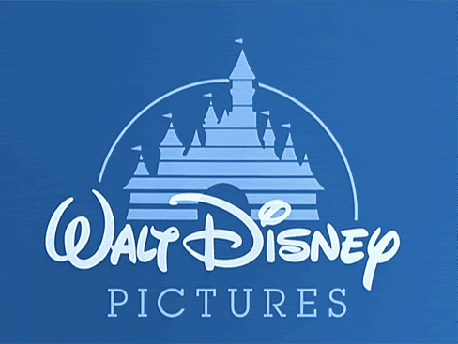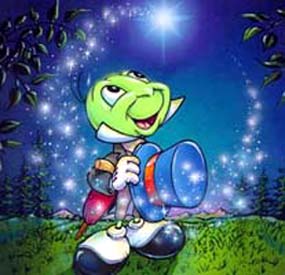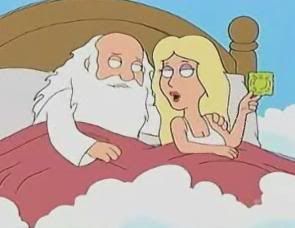
Peter Pan showed us how faith, trust and pixie dust will help to leave our cares behind. Bambi stimulated baby boomers to support gun control and environmentalism. Cinderella became a syndrome. The little mermaid showed the difficulties of intermarriage. The Lion King and the “circle of life: touched on Hindu tradition while the mastermind him self created theme parks that spread “a sense of joy and inspiration to the world”. Many Americans have become so taken with the unique messages sent through Disney film it is very common for families to take what seems like an obligatory pilgrimage to this fantasy Mecca we know as Disney World.

In more than thirty-five animated features hardly any mention of God is visible in a relative sense to Christian and Jewish faiths. Walt Disney, who as an adult avoided church services, did not want religion in his movies. According to Bob Thomas, in Walt Disney: An American Original, authorized biographer of the company's founding brothers "He never made a religious film, and churchmen were rarely portrayed in Disney movies," Thomas wrote that, throughout his career, Walt "had eschewed any film material dealing with religion, reasoning that portions of the audience would be displeased by the depiction of a particular sect." Thus, there is relatively little Judeo-Christian symbolism in 70 years of Disney's animated features, despite the frequent, almost pervasive use of a theological vocabulary: words such as "faith," "believe," "miracle," "blessing," "sacrifice," and "divine." Disney must like to portray consistent Judeo-Christian values without even a godly context. It’s like religion's fruits without its roots. So, good is always rewarded; evil is always punished. Faith is an essential element, faith in you and, even more, faith in something greater than you, even if it is some vague, nonsectarian higher power.

Brother Bear, released November 1, 2003. Similar to previous films like The Lion King and Pocahontas Brother Bear has the same “one with nature” attitude and a very obvious religious affiliation with Buddhism, and Native American values. This counter-cultural animated film is set in the Pacific Northwest 10,000 years ago. Here the word of the spirits intermingles with the everyday lives of a Native American tribe in a tale about totems, bears, and brotherhood. The brothers are presented with a totem from Tanana, the tribal shaman of their village. The Totem represents each of them as Animals. Kenai was the Bear of Love. After a tragedy in the wilderness, Kenai tracks down the grizzly responsible for the death of his brother and kills it. He is then transformed into the animal by the Great Spirits who want to teach him about empathy. The shaman appears to him and tells him that everything will become clear when he reaches "the mountain where the light touches the earth."

America’s reaction to the film created a drastic difference in opinions. Christian Fundamentalists felt the film was immoral for presenting a story world with divine spirits promoting ideas of equality of humans and animals, which contradicts the Bible. The US Conference of Catholic Bishops applauded the film expressing thanks for showing a philosophy similar to St. Francis of Assisi.

Pinocchio has very strong Christian affiliations and represents stories from the Bible. It may have been acceptable in this movie because World War II was turning the world into a different place, much darker and full of fear as terror gripped Europe and the Western world. The story begins with Geppetto the kindly woodcarver wishing on a star asking that Pinocchio may become a real boy His wish is granted as the Blue Fairy brings the puppet to life.

“Little puppet made of pine, awake! The gift of life is thine.”
- Blue Fairy
The job of an animator or puppeteer is to “breathe life into” something inanimate. The materials used to create puppetry and animation all comes from the Earth our human bodies are created out of the same raw materials and chemicals of the Earth…ashes to ashes, dust to dust, as they say.
"And the LORD God formed a man's body from the dust of the ground…and breathed into it the breath of life. And the man became a living person."
- Genesis 2:7
Most of the film is shown through the eyes of Jiminy Cricket making him sort of an overseer. Shooting from a lower angle helps give a more “child like” perspective of the world. The drama and humor in his character is how his human (or cricket) flaws complicate his attempts to keep Pinocchio on the narrow path. He wakes up “late on his first day” as Pinocchio’s conscience, gives up on him when he becomes an actor, and totally abandons him on Pleasure Island where Pinocchio is perpetually being tempted, but Jiminy always returns to his duty. Pinocchio and Jiminy escape the hell of Pleasure Island to discover that Geppetto has been swallowed by Monstro the whale. Pinocchio, during the scenes in the whale’s belly show similarities to the story of Jonah, its distant ancestor, Pinocchio graphically portrays both the consequences of sin and the grace of redemption.

It’s easy to see the Religious affiliations in Pinocchio, but were they intentional? Disney called a halt to the making of this film. Originally there was no Jiminy Cricket. Metaphorically speaking, one could say that we are all like wooden puppets in this life, and afterwards we either become ‘real boys’ or turn into donkeys! Walt Disney made a conscious decision to add such a powerful character. Whatever Disney’s personal religious affiliations were, they were consciously kept away from his films. Disney freely shows religion if it’s considered to be “dead” or “primitive” because of fantasy qualities that easily play into story lines in films. Contemporary religions are not represented for fear of offending a public and that simply does not fit in with Disney’s Message.

No comments:
Post a Comment